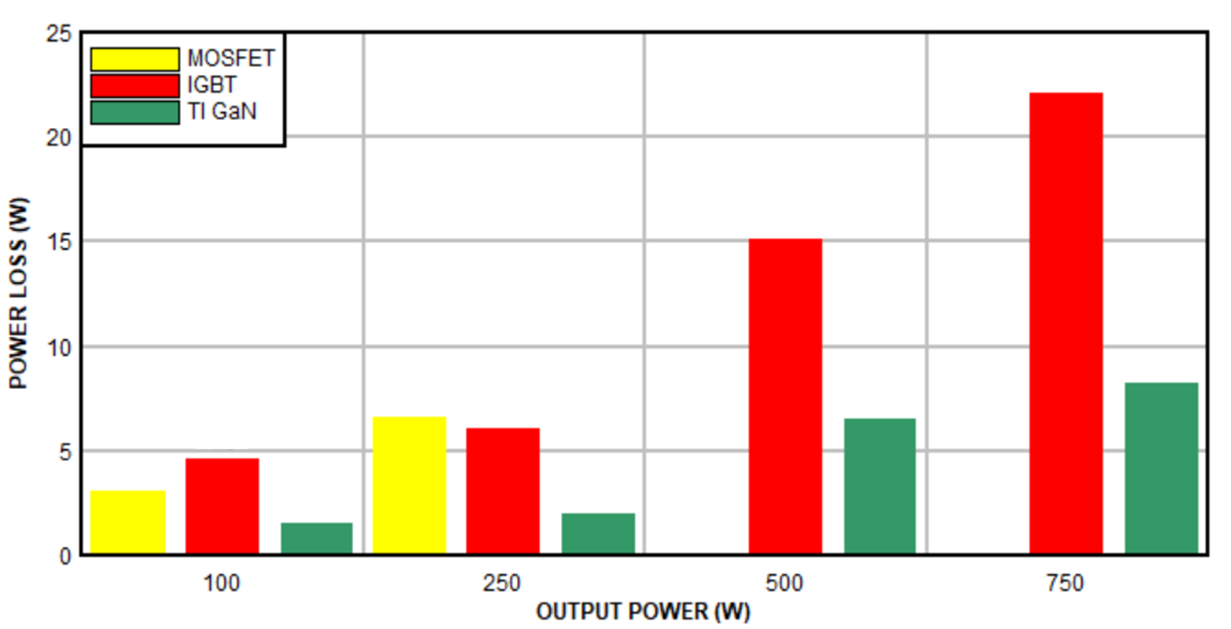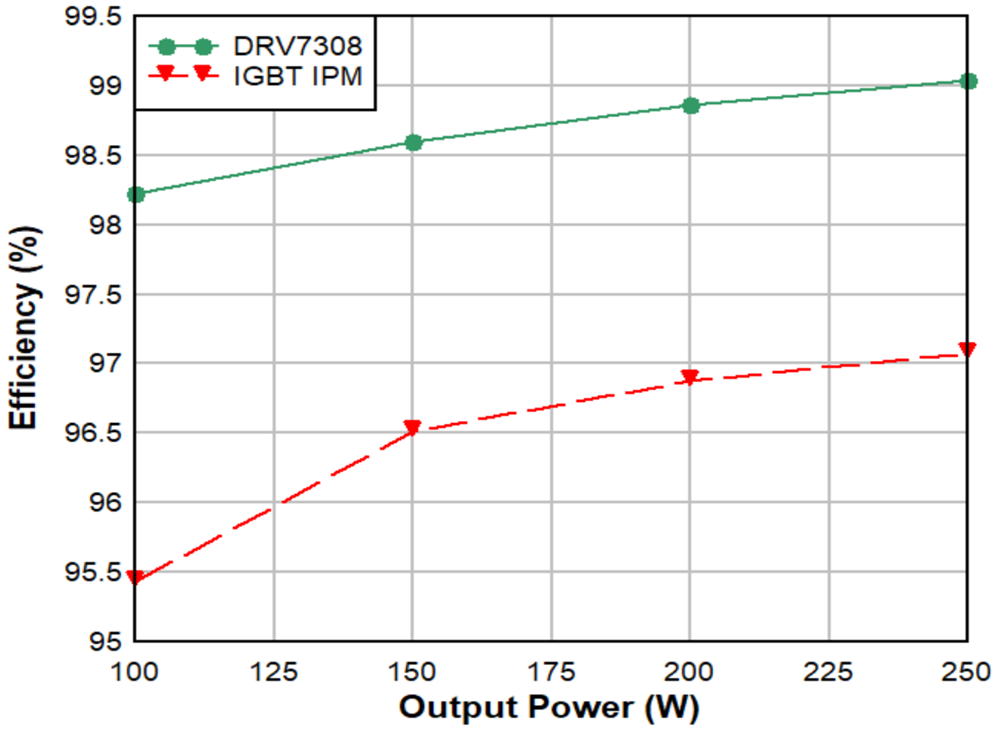-
How Three-Phase Integrated GaN Technology Maximizes Motor-Drive Performance
- 1
- Overview
- At a glance
- How GaN increases inverter efficiency
- Motor performance improvement with GaN power switches
- Design considerations when using GaN in motor drives
- Impact on system efficiency
- Impact on audible noise
- Conducted and radiated emission considerations
- Impact on solution size
- Protected and reliable system designs
- Conclusion
- Additional resources
- IMPORTANT NOTICE
How Three-Phase Integrated GaN Technology Maximizes Motor-Drive Performance
Given the energy consumption of consumer appliances; building heating, ventilation and air-conditioning (HVAC) systems; and industrial drives, efforts are underway to establish system efficiency ratings through programs such as the seasonal energy efficiency ratio (SEER), minimum energy performance standards (MEPS), Energy Star and Top Runner.
Variable frequency drives (VFDs) offer the best system efficiency in heating and cooling systems, especially if they have an accurate and very wide range of speed control. VFDs use an inverter to control motor speeds, along with high-frequency pulse-width modulation (PWM) switching to obtain truly variable speed control.
Although these inverters are currently realized using insulated-gate bipolar transistors (IGBTs) and metal-oxide semiconductor field-effect transistors (MOSFETs) as the power switches, the switching frequency and power delivery are limited given high overall losses. With advancements in wide band-gap technology, however, gallium nitride (GaN)-based power switches in motor drives can help increase power density, power delivery and efficiency.
Manu Balakrishnan
Systems engineer
Motor drivers
How GaN increases inverter efficiency
The conduction losses attributable to GaN FETs are proportional to the on-state resistance of the GaN, similar to a MOSFET. For an IGBT, however, conduction losses depend on the knee voltage and dynamic on-state resistance, which are typically higher than GaN FETs or MOSFETs.
As for switching losses, GaN FETs offer much lower losses compared to MOSFETs and IGBTs because of these reasons:
- GaN offers zero reverse recovery. With zero reverse recovery, it is possible to switch a GaN FET at a very high current slew rate (di/dt) and voltage slew rate (dv/dt). In MOSFETs, the body diode suffers from high zero reverse recovery, limiting the switching di/dt and dv/dt and causing additional losses and phase-node voltage ringing. With an IGBT, even the addition of an optimized antiparallel diode can still cause challenges related to reverse recovery.
- When switching off, IGBTs suffer from minority carrier recombination current, commonly known as tail current, which increases turnoff losses. GaN doesn’t have any tail current.
- GaN offers lower capacitance compared to IGBTs and MOSFETs, resulting in lower capacitive switching losses.
- Controlled and faster di/dt and controlled dv/dt help optimize voltage-current overlap losses during switching.
Figure 1 shows a theoretical inverter efficiency comparison between GaN-, IGBT- and MOSFET-based solutions with a 20kHz switching frequency, the phase-node voltage slew rate for the GaN-based inverter limited to 5V/ns, and an ambient temperature of 55°C. You can see that the GaN solution helps reduce power losses by at least half.
 Figure 1 Efficiency comparison of GaN,
MOSFET and IGBT solutions.
Figure 1 Efficiency comparison of GaN,
MOSFET and IGBT solutions.Figure 2 compares the efficiency of the Texas Instruments (TI) DRV7308 three-phase GaN intelligent power module (IPM) to a 5A peak-current-rated IGBT IPM with a 300VDC supply at a 20kHz switching frequency with a fan motor that has 2m of cable at a 25°C ambient temperature, delivering 0.85A of root-mean-square winding current and 250W of inverter output power. The slew rate of the GaN IPM is configured for 5V/ns.
 Figure 2 Efficiency comparison of the
DRV7308 and an IGBT IPM in a 250W application.
Figure 2 Efficiency comparison of the
DRV7308 and an IGBT IPM in a 250W application.Motor performance improvement with GaN power switches
Permanent-magnet synchronous motors designed for high speed or motors with a lower inductance often need a high PWM frequency to reduce current ripple and achieve optimum motor performance. End-equipment examples include hair dryers, air blowers and pumps.
Higher current ripple in the motor winding can cause unwanted torque ripple, increased copper and core losses, and inaccuracies in the average motor current sensed during switching.
MOSFET- or IGBT-based IPMs are typically rated for usage at 20kHz; however, they are normally used at a lower switching frequency (6kHz to 16kHz) because of high switching losses. With GaN offering much lower switching losses even at a lower dv/dt, it is possible to switch at a much higher frequency to improve motor efficiency and performance.
Figure 3 shows the functional block diagram of the DRV7308, which integrates predrivers for all GaN FETs with slew-rate control of phase-node voltages. The DRV7308 helps achieve more than 99% inverter efficiency for a three phase-modulated, field oriented control-driven 250W motor-drive application in a quad flat no-lead (QFN) 12mm-by-12mm package, eliminating the need for a heat sink.
 Figure 3 DRV7308 functional block
diagram.
Figure 3 DRV7308 functional block
diagram.